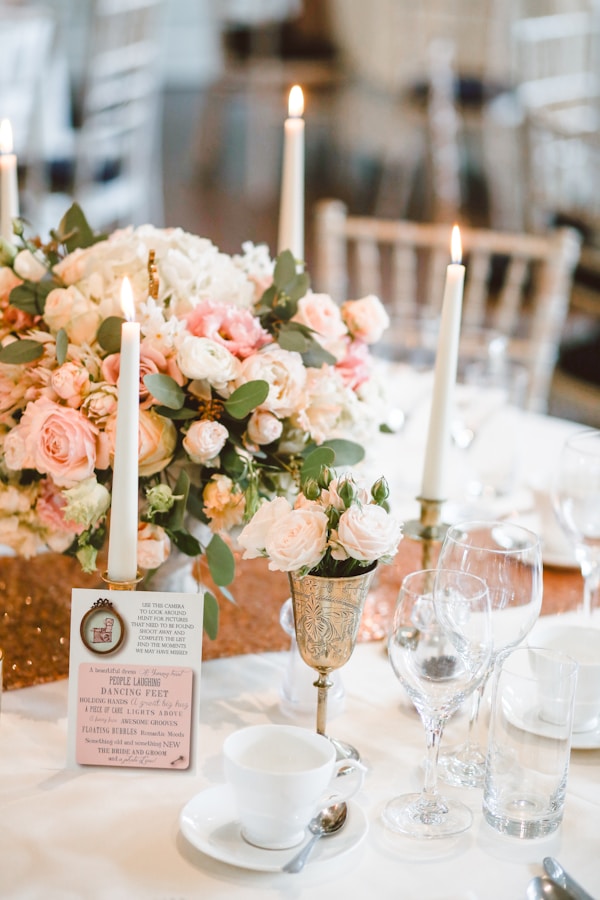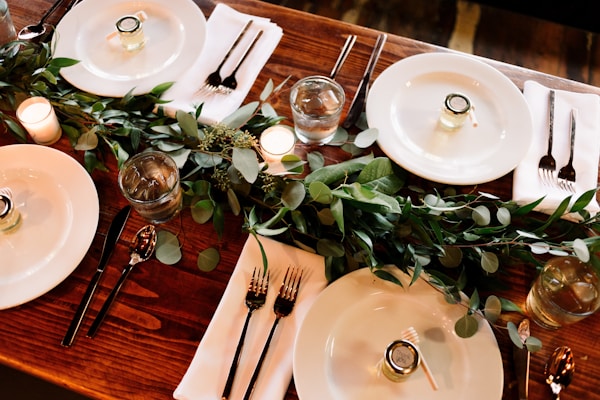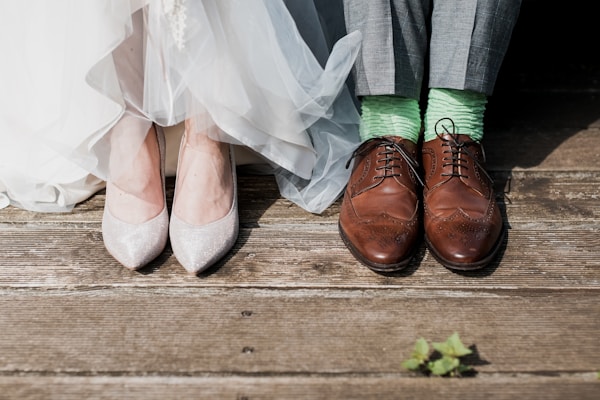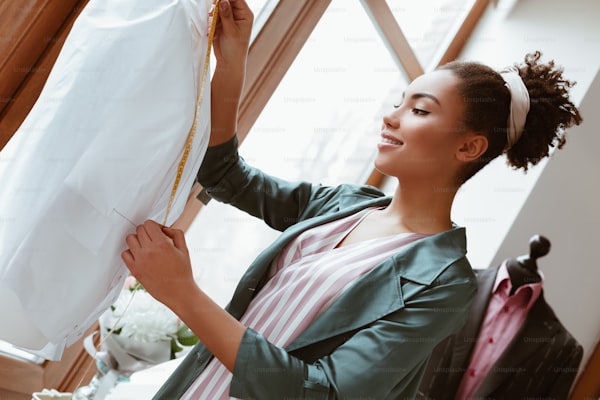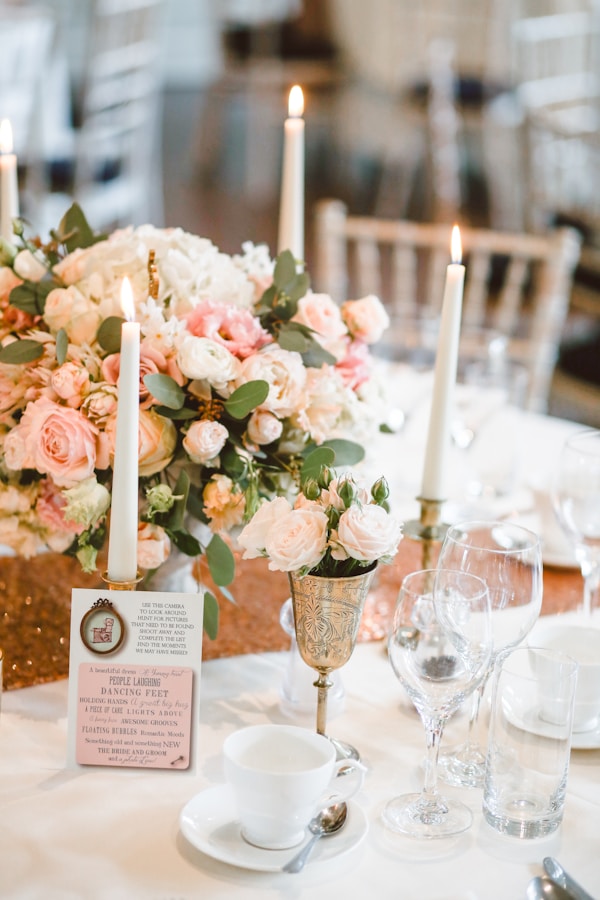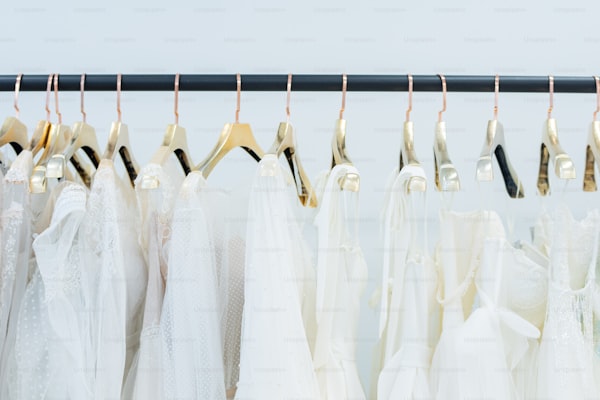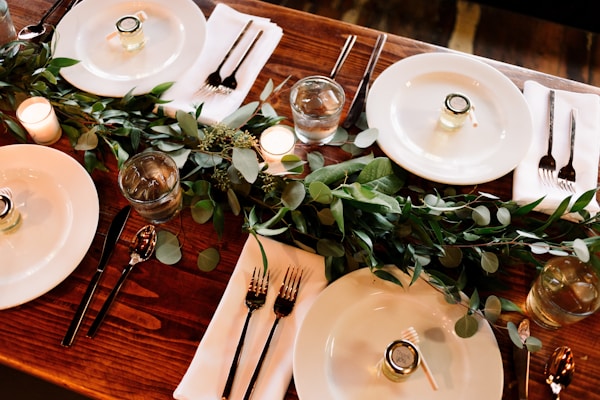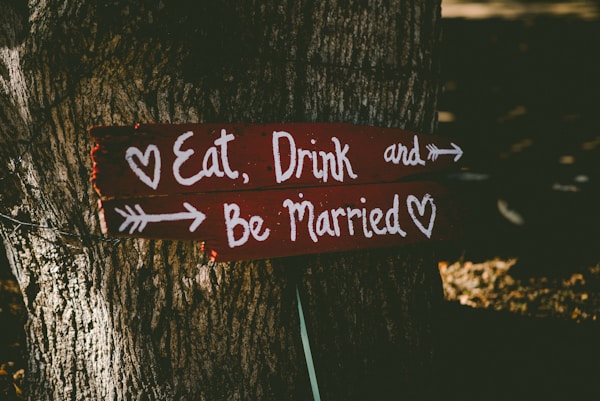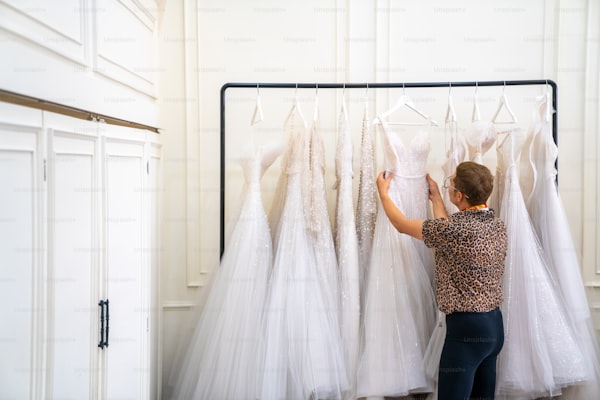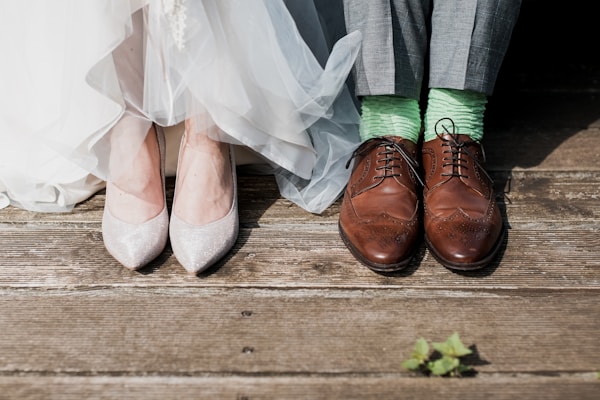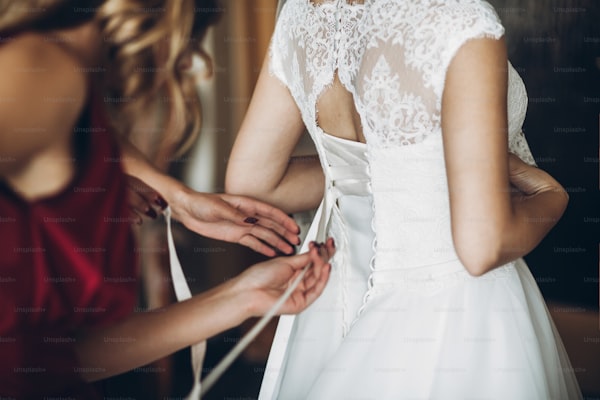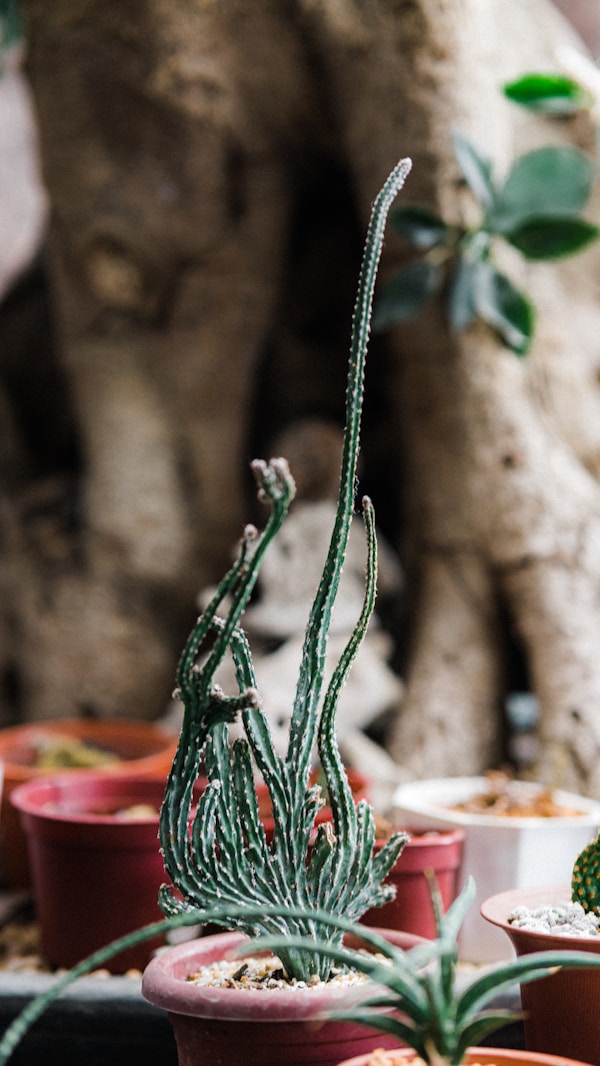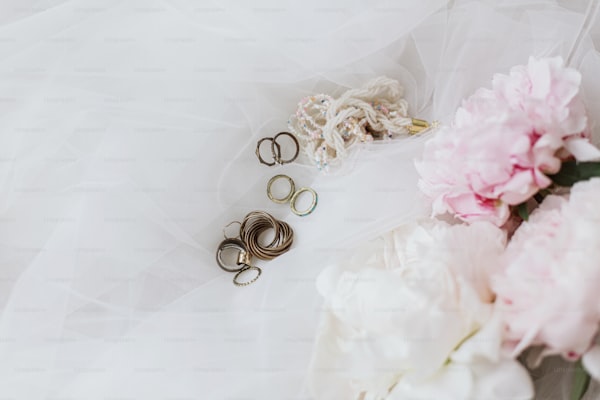Essential Factors to Consider When Choosing the Lining for a Wedding Dress
Understanding Wedding Dress Linings When it comes to selecting the perfect wedding dress, every detail matters, including the lining. The lining is often an overlooked aspect of bridal wear that can significantly affect the overall look, comfort, and quality of the gown. In this article, we will explore the important factors you should consider when choosing the lining for a wedding dress, ensuring that you make an informed decision on your big day. Importance of Lining in a Wedding Dress The lining serves several crucial purposes in a wedding dress: Comfort: A well-chosen lining can enhance the comfort of the dress, especially during long hours of wear. Structure: The lining helps to provide the desired shape and structure, ensuring that the gown drapes beautifully. Durability: High-quality linings can enhance the longevity of the dress, making it more resilient to wear and tear. Coverage: Linings can prevent see-through issues, providing modesty and security. Factors to Consider When Choosing Wedding Dress Linings When selecting the lining for your wedding dress, several factors should be taken into consideration. Here’s a detailed look at these elements: 1. Fabric Type The choice of fabric for the lining can drastically affect the feel and look of the dress. Common lining materials include: Satin: Known for its smooth texture and luxurious feel, satin is a popular choice among brides. Silk: Exuding elegance, silk linings are light...
Ensuring Your Wedding Dress Maintains Its Color Over Time: Essential Steps and Tips
Understanding the Importance of Color Preservation for Wedding DressesYour wedding day is one of the most significant days of your life. A wedding dress plays a crucial role in this celebration, symbolizing beauty, love, and commitment. One concern many brides face is ensuring that their wedding dress maintains its color over time. In this article, we will explore the necessary steps and tips to keep your cherished gown looking as stunning as the day you wore it.Common Concerns About Wedding Dress Color PreservationWedding dresses often come in various shades, with white, ivory, and champagne being the most popular. However, environmental factors and improper care can lead to discoloration and yellowing over time. This section discusses the most common concerns related to wedding dress color preservation:Environmental Factors: Exposure to sunlight can fade fabrics, while humidity can promote mildew.Improper Cleaning: Using the wrong cleaning products or methods can damage fabric and alter color.Storage Conditions: Storing your dress in a non-breathable bag can cause it to yellow.Steps to Maintain Your Wedding Dress ColorMaintaining the color of your wedding dress involves careful attention to cleaning, storage, and periodic checks. Below are detailed steps you can take to ensure your dress remains vibrant for years to come:1. Choose the Right Cleaning MethodCleaning your wedding dress soon after the wedding is essential. Here are some tips for effective cleaning:Professional ...
How to Safely Store a Wedding Dress During Transport: Essential Tips to Avoid Damage
Transporting a wedding dress can be a nerve-wracking experience for brides-to-be. One of the most exciting moments leading up to a wedding is for a bride to finally receive her dress, but what happens during transport can significantly impact its condition. In this article, we will explore the best practices for how a wedding dress is stored during transport to avoid damage, ensuring that it arrives at its destination in pristine condition.The Importance of Proper Wedding Dress Transport MethodologyTransporting a wedding dress requires careful planning and execution. A wedding dress is usually a significant financial investment and holds sentimental value, representing one of the most memorable days in a person's life. Avoiding damage during transport is essential to ensuring that the dress looks perfect on the wedding day. Brides often wonder, "How is a wedding dress stored during transport to avoid damage?" This article will answer that question and more.1. Choosing the Right Transport MethodThe first step in safely transporting a wedding dress is selecting the right method of transport. Here are some options:Transport MethodDescriptionPersonal VehicleUsing a personal car ensures that the dress is handled with care and can be monitored during the journey.Taxi or RideshareOpting for services like Uber or Lyft can also provide flexibility but ensure the driver is informed about the dress.Professional Wedding Dress Transport ServicesSpecialized services exist that cater to wed...
Discover the Best Ways to Clean and Preserve Vintage Wedding Dresses
Understanding the Importance of Caring for Vintage Wedding DressesVintage wedding dresses are not just garments; they embody memories, emotions, and significant moments in our lives. Over time, however, these exquisite pieces can suffer from discoloration, stains, and fabric degradation. Therefore, knowing what are the best ways to clean and preserve vintage wedding dresses is essential for maintaining their beauty and longevity.Why Preservation MattersEach vintage wedding dress carries with it a unique history, often passed down through generations. Cleaning and preserving these dresses not only enhances their appearance but also safeguards their integrity for future enjoyment. Improper care can lead to irreparable damage, making it crucial to approach their maintenance with knowledge and sensitivity.Common Issues Faced by Vintage Wedding DressesIssueDescriptionYellowingOxidation and age can cause white or ivory fabrics to turn yellow.StainsFood, drink, and natural oils from the skin can leave stubborn marks.Fabric DegradationDelicate fabrics may weaken over time, especially if stored improperly.Cleaning Vintage Wedding Dresses: Step-by-Step GuideKnowing what are the best ways to clean and preserve vintage wedding dresses starts with understanding the cleaning process. Here, we outline a comprehensive method to ensure your dress is cared for correctly.1. Assess the Condition of the DressBefore you start cleaning, thoroughly inspect the dress. Look for any visible stains, tea...
Understanding the Fitting Process for a Custom-Made Wedding Dress
The journey to finding the perfect wedding dress can be both exciting and overwhelming for brides-to-be. One essential aspect of this journey is the fitting process, especially when it comes to custom-made wedding dresses. In this article, we will explore how the fitting process is handled for a custom-made wedding dress, covering everything from the initial consultation to final adjustments. Whether you are a bride ready to embark on this journey or simply curious about the process, this guide will enlighten you about what to expect. The Importance of the Fitting Process When it comes to a custom-made wedding dress, the fitting process is crucial for ensuring that the gown fits perfectly and flatters the bride's body shape. Every bride is unique, and a well-fitted dress can enhance her beauty and confidence on the big day. Below, we break down the fitting process into several vital stages. 1. Initial Consultation The fitting process begins with an initial consultation with the designer or seamstress. During this meeting, the bride discusses her vision for the dress, including style, fabric, and any specific details she desires. This is a great time to bring along inspiration photos, sketches, or even existing family heirloom dresses to give the designer an idea of her preferences. What to Expect During Your Initial Consultation A discussion about design ideas and inspirations An assessment of fabric options available Advice on which styles best fit the bride’s bo...
Ultimate Guide: Best Ways to Handle Delicate Bridal Fabrics During Alterations
Brides-to-be often dream of the perfect wedding dress. However, when it comes to alterations, special attention must be paid, especially for delicate bridal fabrics. Understanding how to interact with these fabrics properly can make the difference between a flawless fit and a wardrobe malfunction on the big day. So, what are the best ways to handle delicate bridal fabrics during alterations? Let's explore some expert tips, essential techniques, and best practices. Understanding Delicate Bridal FabricsDelicate fabrics like silk, chiffon, lace, and tulle require special care during alterations. The nature of these materials makes them prone to damage if not handled correctly. Here’s a breakdown of common delicate fabrics used in bridal wear:FabricCharacteristicsAlteration TipsSilkSoft, luxurious, and prone to fraying.Use a fine needle, and avoid using pins if possible.LaceDelicate and intricate, can be fragile and difficult to sew.Carefully baste seams before final stitching.TulleLight, airy, and can easily snag.Handle with extra care, use a rotary cutter for straight edges.ChiffonFlowy and lightweight, can slip while sewing.Use tissue paper underneath while cutting and sewing.Choosing the Right ToolsWhen it comes to altering bridal fabrics, the right tools can make all the difference. Here’s what you should have in your toolkit:Fine needles: Use needles that are specifically designed for delicate fabrics to reduce the risk of snags.Thread: Choose a thread that matches the fabr...
Essential Steps to Protect Wedding Dress Embellishments During Dry Cleaning
Wedding dresses are often adorned with delicate embellishments, such as beads, sequins, and lace. These intricate details not only enhance the beauty of the gown but also require special care when it comes to dry cleaning. In this article, we will explore the essential steps taken to protect wedding dress embellishments during the dry cleaning process, ensuring that your special attire remains in impeccable condition for years to come.Understanding Wedding Dress EmbellishmentsBefore we dive into the protective measures, it's important to understand the types of embellishments commonly found on wedding dresses. Here are a few examples: Beads: Used to add sparkle and dimension Sequins: Reflective elements that create a glamorous effect Lace: Delicate fabric often added to sleeves or bodices Appliqués: Decorative pieces sewn onto the fabric, often made of silk or laceThe Importance of Professional Dry CleaningWhile you may be tempted to clean your wedding dress at home, professional dry cleaning is highly recommended. Professional dry cleaners have the experience and equipment needed to handle delicate fabrics and intricate embellishments. Therefore, it is essential to choose a reputable dry cleaner with experience in handling wedding dresses.Steps Taken During the Dry Cleaning ProcessBelow are the critical steps taken to protect wedding dress embellishments during dry cleaning:StepDescription1. InspectionThe dry cleaner thoroughly inspects the dress for stains and d...
Unveiling the Best Methods for Removing Stains from a Wedding Dress
Wedding dresses are often cherished possessions, encapsulating memories of one of the most significant days in a person's life. However, beautiful as they are, they are equally susceptible to stains. In this guide, we will explore the best methods for removing stains from a wedding dress, ensuring that your prized garment stays pristine for years to come.Understanding the Fabric of Your Wedding DressBefore diving into stain removal techniques, it's crucial to understand the common fabrics used in wedding dresses. Most wedding dresses are made from luxurious materials like silk, satin, lace, and tulle. Each fabric requires a specific approach to stain removal to avoid damage.Common Stains on Wedding DressesStains can occur from various sources, including food, beverages, makeup, and even environmental factors. Here are some common stains you might encounter:Red wineMakeup smudgesGrease and oilGrass stainsWatermarksBest Methods for Stain RemovalNow let's delve into the effective methods for removing these pesky stains from your wedding dress.1. **Red Wine Stains**Red wine stains can be particularly challenging, but prompt action can make a significant difference. Here’s how to tackle them:Materials Needed:White wine, salt, or club sodaSteps:Blot the stain with a paper towel to absorb excess wine.Pour white wine over the stained area to neutralize the red wine.Sprinkle salt or club soda on top to absorb the liquid.Rinse thoroughly and check for any remaining stain before drying....
Understanding Wedding Dress Production: Mass-Market vs. Custom Orders
IntroductionThe wedding industry is a vibrant sector that caters to diverse tastes and preferences, particularly when it comes to wedding dresses. As couples prepare for their special day, an important question arises: How do manufacturers handle wedding dress production for mass-market versus custom orders? This article explores the intricacies of wedding dress production to shed light on this complex topic, taking into account various factors including design, material selection, timeframes, and pricing. Mass-Market Wedding Dress ProductionMass-market wedding dresses are designed for a larger audience, making them widely available at a more affordable price point. Manufacturers utilizing a mass production model typically follow a streamlined process that includes: Standardization of Designs: Mass-market manufacturers create a limited range of styles produced in bulk to meet general customer demand. Material Sourcing: These manufacturers often procure materials in large quantities, securing lowered prices that can be passed on to consumers. Production Efficiency: Utilizing assembly line techniques, manufacturers can significantly reduce the production time per dress. Retail Partnerships: Mass-produced dresses are often sold through various retail chains and online platforms which helps in reaching a wider audience.Advantages of Mass-Market ProductionThere are several benefits to choosing a mass-market wedding dress, including:ProsConsAffordabilityLimited customiz...
How Beadwork is Applied to a Wedding Dress for Maximum Durability
Wedding dresses hold a special place in every bride's heart, symbolizing love, commitment, and beauty. An essential component that contributes to the elegance of a wedding dress is beadwork. But how is beadwork applied to a wedding dress to ensure durability? This article will explore the techniques, materials, and care tips involved in creating beadwork that lasts, while also answering related queries that prospective brides may have. The Importance of Beadwork in Wedding Dresses Beadwork adds a luxurious touch to wedding dresses, transforming a simple design into a breathtaking masterpiece. However, it goes beyond aesthetics. The right beadwork technique can significantly enhance the durability of the wedding dress. Brides want their dress to make an impact but also withstand the test of time, especially if they wish to preserve it as a cherished memento. Types of Beadwork Techniques Several techniques are commonly used in beadwork for wedding dresses. Here are some of the most popular methods: Hand Beading: This technique involves applying beads by hand, usually with a needle and thread. It allows for precise placement but can be time-consuming. Machine Beading: Some designers opt for machine beading, where beads are attached using sewing machines. This method is faster and more consistent but may be less intricate. Appliqué Beading: In this method, beads are sewn onto fabric that has been cut into specific shapes and then attached to the dress. This technique adds dimen...
Preserving Your Precious Memories: What Are the Best Ways to Store a Wedding Dress Long-Term to Avoid Damage?
For many brides, their wedding dress is more than just a piece of clothing; it represents a cherished moment in their lives. To ensure this special garment remains pristine for years to come, understanding the best methods to store a wedding dress long-term is crucial. Below, we’ll explore various techniques, considerations, and tips for maintaining your wedding dress, ensuring it stays as beautiful as the day you wore it.Why Proper Storage MattersWedding dresses are often made from delicate fabrics and intricate details that can be easily damaged. Whether it’s exposure to sunlight, dust, or improper handling, these factors can lead to discoloration, fabric deterioration, and even irreversible damage. Therefore, investing time in learning how to store your wedding dress properly is essential for preserving this sentimental item.Choosing the Right LocationWhere you decide to store your wedding dress plays a significant role in its preservation. Consider the following locations: Cool, Dry Place: Avoid areas with high humidity or extreme temperature changes, such as attics or basements. Dark Closet: Store your dress in a closet where it won't be exposed to sunlight, which can fade colors. Away from Heat Sources: Keep your dress away from heaters, radiators, or other heat-generating appliances.Preparing Your Wedding Dress for StorageBefore storing your wedding dress, it’s important to prepare it properly. Here’s how: Cleaning: Have your wedding dress professionally cleaned sh...
Mastering the Art of Wedding Dress Alterations: Fitting for Every Body Shape
Understanding Wedding Dress Fitting AdjustmentsGetting married is one of the most significant moments in a person's life, and finding the perfect wedding dress can be a daunting task. Not only does the dress need to be beautiful, but it also must fit beautifully to enhance the bride's overall appearance. Each bride has a unique body shape, and understanding how the fit of a wedding dress is adjusted for various body shapes during alterations is crucial. This article dives deep into the world of wedding dress alterations, exploring the techniques used to accommodate different body shapes.Why Alterations MatterMany brides may find a wedding dress they love but struggle with the fit. This is where alterations come into play. The primary goal is to ensure that the dress complements the bride’s body shape, providing support, comfort, and style. A well-fitted dress can dramatically change the way a bride feels on her big day.Common Body Shapes and Alteration TechniquesBrides come in all shapes and sizes, and each requires specific considerations when it comes to dress alterations. Below are some of the common body shapes and the respective alteration methods employed:Body ShapeAlteration TechniquesAthleticAdding structure and tailoring the waist to create curves.PearTaking in the bodice while letting out or adjusting the skirt to balance proportions.AppleAdding darts or removing excess fabric around the waist for a more fitted look.HourglassTaking in the sides for a more tailored f...
Essential Steps to Ensure Your Wedding Dress Retains Its Original Shape After Cleaning
Your Ultimate Guide to Preserving the Integrity of Your Wedding DressWedding dresses are not just garments; they are a symbol of love, commitment, and unforgettable memories. After the big day, it is crucial to clean and preserve your wedding dress properly to retain its original shape and beauty. This article explores the essential steps taken to ensure that a wedding dress maintains its form after cleaning, providing you with invaluable advice to protect your cherished attire.Understanding Wedding Dress MaterialsBefore delving into the cleaning process, it's important to understand the different materials commonly used in wedding dresses. Materials such as silk, satin, lace, and tulle require special care during cleaning to avoid damage or loss of shape. Below is a quick overview of these fabrics:Fabric TypeCare InstructionsShape RetentionSilkDry clean onlyNeeds careful handling to prevent stretchingSatinProfessional cleaning recommendedCan lose its luster if not treated properlyLaceHand wash with mild detergentMay require reshaping post-cleaningTulleGentle wash cycle or dry cleanProne to crumpling; needs fluffingSteps to Clean Your Wedding Dress1. Assess the DressThe first step in ensuring your wedding dress retains its original shape after cleaning is to thoroughly assess it. Check for stains, discolorations, or areas that may need special attention, such as the hem where it may have picked up dirt. Take note of any embellishments like beads or sequins; these can impact t...
Mastering the Production Timeline for Custom Wedding Dresses
Understanding the Production Timeline for Custom Wedding DressesWhen planning a wedding, one of the most important decisions a bride can make is selecting the perfect wedding dress. However, the process of creating a custom wedding dress involves significant attention to detail, not only in design but also in the production timeline. This article explores how the production timeline is managed for custom wedding dresses, ensuring that brides have their dream dress on time for their big day.The Importance of a Well-Managed Production TimelineA custom wedding dress is a unique garment, reflecting the bride’s personal style and the theme of the wedding. Managing the production timeline effectively is crucial for several reasons: Timeliness: Many brides get engaged months or even years before their wedding day, leading to high expectations for when their dresses should be ready. Fit and Adjustments: Custom dresses often require multiple fittings and adjustments to ensure a perfect fit, which can only be done when the timeline is properly managed. Stress Reduction: Knowing when to expect the dress can significantly reduce anxiety for brides during the planning process.Typical Steps in the Production TimelineThe production timeline for custom wedding dresses typically involves multiple steps, each crucial for delivering the perfect dress on time. Below is a breakdown of these steps: Step Duration Description Initial Consultation ...
Understanding Techniques to Maintain the Shape of Wedding Dress Fabrics Over Time
When it comes to a wedding, every detail matters, and your wedding dress plays a central role in creating that magical moment. One of the main concerns for brides is ensuring their wedding dress remains as beautiful as the day it was worn, especially regarding its fabric. What methods are used to ensure wedding dress fabrics do not lose shape over time? This is a critical question many brides ask, as the longevity of a wedding dress is paramount for those who wish to preserve it as a cherished keepsake.Common Wedding Dress FabricsBefore diving deep into the methods used for maintaining the shape of wedding dress fabrics, it's essential to understand the types of fabrics commonly used. Fabrics like satin, silk, lace, and tulle are favored for their elegance and grace in wedding attire. Each of these fabrics comes with its own set of characteristics that influence how they maintain their shape. Below is a brief overview:Fabric TypeCharacteristicsShape RetentionSatinSmooth with a slight sheen; luxurious feelHolds shape reasonably well, but can sag if not supportedSilkSoft, lightweight, and breathableCan lose shape over time if not handled carefullyLaceDelicate and intricate design; often overlayNeeds layering and backing to maintain structureTulleLight and airy netting; often used for skirtsHolds shape well, but can flatten easilyMethods to Maintain Fabric ShapeNow that we have a grasp on the various wedding dress fabrics, let’s explore the methods used to ensure that these fabr...
Mastering the Art of Choosing Embellishments for Different Wedding Dress Styles
Weddings are magical events that embody love, joy, and celebration. A key element of any wedding is the wedding dress, which often becomes the centerpiece of the occasion. As brides prepare for their big day, one significant aspect they must consider is the choice of embellishments for their wedding dress styles. But how do you select the right embellishments that complement each dress style? In this article, we will guide you through the various guidelines for selecting embellishments tailored to different wedding dress styles.The Importance of EmbellishmentsEmbellishments are like the cherry on top of a sundae; they enhance the overall aesthetic of a wedding dress. From delicate lace appliqués to sparkling beadwork, embellishments can add texture, dimension, and personality to any gown. Understanding how to select these elements can not only enhance the dress's beauty but also align it with the overall wedding theme, personal style, and comfort.Understanding Different Wedding Dress StylesBefore diving into embellishments, it’s essential to understand the various wedding dress styles available. Here’s a brief overview:Dress StyleDescriptionA-LineFitted at the waist and flares out to the hem, resembling the shape of a capital letter "A".Ball GownA formal style featuring a fitted bodice and a full skirt. Ideal for classic and fairytale-themed weddings.MermaidTight-fitting through the bodice and hips, flaring out at or below the knee. Perfect for accentuating curves.SheathFollo...
How to Prevent Beadwork from Catching on a Wedding Dress: Essential Tips for a Seamless Wear
The Dilemma of Beadwork and Wedding DressesEvery bride dreams of looking perfect on her wedding day, and the right dress plays a significant role in achieving that vision. Among the many details that make a wedding dress exquisite, beadwork stands out, adding an element of sparkle and elegance. However, one common concern that brides have is: How do you prevent beadwork from catching on a wedding dress during wear? This article will provide invaluable tips and strategies to ensure that your beadwork enhances your look without causing any discomfort.Understanding the IssueBeadwork can be a beautiful addition to a wedding dress, but it can also be a source of frustration. The intricate designs created by beads can snag on delicate fabrics, causing pulls or tears that may ruin the dress's integrity. Therefore, it's critical to address this issue before the big day. Here are some potential factors that contribute to beadwork catching on a wedding dress:FactorDescription1. Fabric TypeCertain fabrics are more prone to snagging than others. Delicate materials like tulle and lace can easily catch on beads.2. Bead Size and TypeHeavy or large beads are more likely to catch on a wedding dress as they create a noticeable texture difference.3. Dress ConstructionPoorly constructed seams or lining can exacerbate the problem of beadwork catching on the main fabric of the dress.Strategies to Prevent Beadwork from CatchingFortunately, there are several preventive measures that brides can take ...
Ensuring the Quality of Sequins and Beads in Wedding Dress Production
IntroductionWhen it comes to creating the perfect wedding dress, every detail matters. One of the most essential aspects is the embellishments, particularly sequins and beads. But how do you ensure their quality before using them in wedding dress production? This article will delve into the methods and guidelines for assessing the quality of sequins and beads to ensure that every wedding dress sparkles with elegance and durability.Understanding the Importance of Quality Sequins and BeadsThe right sequins and beads can transform an ordinary wedding dress into a stunning masterpiece. However, poor-quality embellishments can lead to a range of issues, including fading, breaking, or falling off entirely. This not only affects the appearance of the dress but also the overall satisfaction of the bride on her special day.Characteristics of High-Quality Sequins and BeadsBefore we dive into the testing methods, it’s essential to understand what characteristics define high-quality sequins and beads. Here are several key attributes to consider: Luster: High-quality sequins should reflect light beautifully, creating a shimmering effect. Uniformity: Look for even shapes and sizes; irregularities can indicate inferior quality. Durability: Quality beads and sequins should withstand wear and tear without losing their appearance. Colorfastness: Check if the colors remain vibrant and do not fade or bleed when washed.Methods to Ensure Quality in Sequins and BeadsNow that we know the...
Mastering the Art of Even Distribution: Hand-Sewn Beads on Wedding Dress Bodices
IntroductionCreating a stunning wedding dress is an art that requires meticulous attention to detail, especially when it comes to embellishments like hand-sewn beads. These small decorative elements play a significant role in enhancing the overall look of the dress, particularly on the bodice, which often serves as the focal point. One common inquiry among bridal designers and enthusiasts is, “How do you achieve an even distribution of hand-sewn beads on a wedding dress bodice?” In this article, we will delve into effective techniques, tools, and tips for achieving that perfect bead distribution, ensuring your wedding dress dazzles on the big day.Understanding Bead DistributionEven distribution of beads is crucial for both aesthetic appeal and comfort. Uneven bead placement can lead to a lopsided appearance and may even affect how the dress hangs on the body. To achieve this desired effect, several factors should be considered:Design Layout: Sketch your design to visualize where beads will be placed.Type of Beads: Different sizes and weights of beads can affect the hang and drape.Fabric Characteristics: The type of fabric you choose can influence bead placement and distribution.Preparation for Bead SewingBefore you begin sewing beads onto the bodice, it’s vital to prepare properly. Start by washing and ironing the wedding dress fabric to eliminate any creases. This ensures that all your bead placements are accurate. Additionally, prepare your workspace by arranging all necess...
Mastering the Art of Managing Multiple Fittings for a Custom Wedding Dress: A Comprehensive Guide
IntroductionGetting a custom wedding dress is one of the most exciting aspects of wedding planning. A perfectly tailored dress can enhance the bride's beauty and confidence on her big day. But achieving the ideal fit often requires multiple fittings. You might be wondering, how do you manage multiple fittings to ensure a perfect fit for a custom wedding dress? In this article, we’ll explore effective strategies to navigate the process smoothly.The Importance of Multiple FittingsCustom wedding dresses are designed to embrace and accentuate the bride's unique body shape and size. However, every body is different, and small changes can significantly affect the overall look and comfort of the dress. Multiple fittings allow the designer to make necessary adjustments that achieve the perfect fit. Here are some reasons why multiple fittings are crucial: Precision: Each fitting provides an opportunity to fine-tune the dress’s details, such as neckline and waistline adjustments. Comfort: Ensuring that the dress is comfortable to wear is imperative for a long day of celebration. Aesthetic Appeal: The visual appeal of the dress is enhanced when it fits flawlessly, showcasing the bride's figure beautifully.Planning Your FittingsTo make the fitting process efficient and stress-free, effective planning is key. Here’s how to manage your fittings:1. Schedule Adequate TimeIt’s essential to allocate enough time between fittings. Ideally, schedule your first fitting several months befo...

